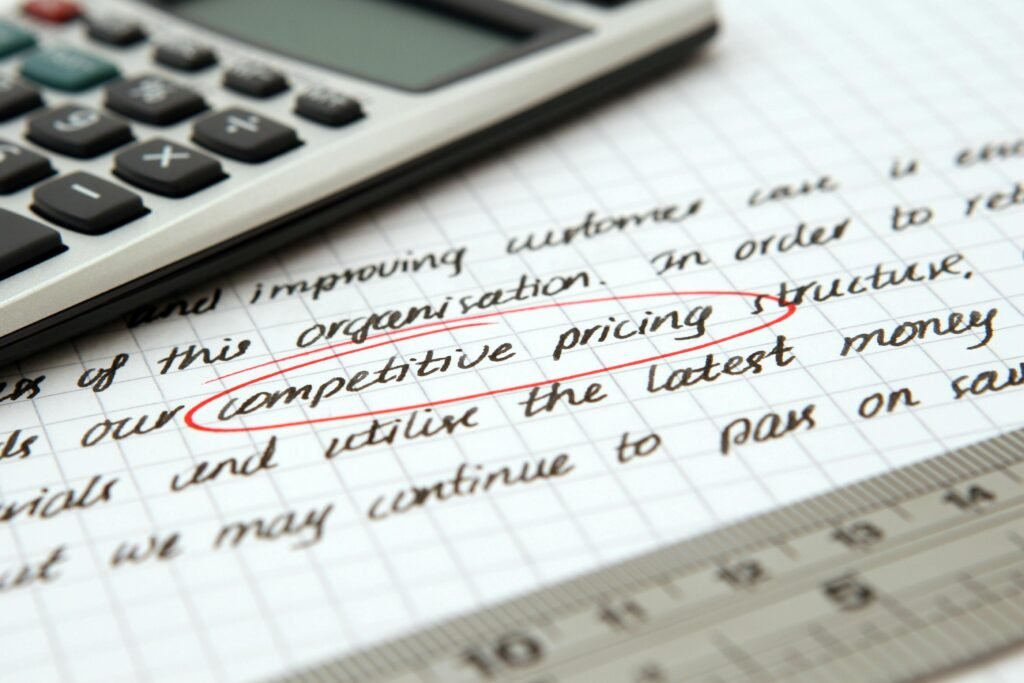Are you tired of watching your investments roller-coaster through market ups and downs? 😫 Do you wish there was a more reliable way to build wealth in the stock market? Enter value investing – a time-tested strategy championed by legendary investors like Warren Buffett and Benjamin Graham.
But here’s the catch: successful value investing isn’t just about buying “cheap” stocks. It’s about identifying truly undervalued companies with strong fundamentals. To do this, you need to master a set of crucial metrics that separate the wheat from the chaff in the investment world. 🌾💼
In this blog post, we’ll dive into the 5 essential value investing metrics that every savvy investor should have in their toolkit. From the classic Price-to-Earnings ratio to the often-overlooked Free Cash Flow, we’ll break down each metric and show you how to use them to make smarter, more profitable investment decisions. Get ready to take your investing game to the next level! 🚀📈
Understanding Price-to-Earnings (P/E) Ratio

Calculating P/E ratio
The Price-to-Earnings (P/E) ratio is a fundamental metric in value investing. To calculate it, divide a company’s stock price by its earnings per share (EPS). For example:
P/E Ratio = Stock Price / Earnings Per Share
If a stock is trading at $50 and has an EPS of $5, its P/E ratio would be 10.
Interpreting P/E ratio values
P/E ratios can vary widely, but generally:
- Low P/E (< 15): Potentially undervalued
- Average P/E (15-25): Fairly valued
- High P/E (> 25): Potentially overvalued
However, these ranges are not absolute and can differ based on various factors.
Comparing P/E ratios across industries
P/E ratios should be compared within the same industry for meaningful insights. Here’s a comparison of average P/E ratios across different sectors:
| Sector | Average P/E Ratio |
|---|---|
| Technology | 28.5 |
| Healthcare | 22.3 |
| Financials | 13.7 |
| Consumer Staples | 20.1 |
| Utilities | 18.9 |
Limitations of P/E ratio
While valuable, the P/E ratio has limitations:
- Doesn’t account for growth potential
- Can be manipulated through accounting practices
- Doesn’t consider debt levels
- May be misleading for companies with no earnings
Now that we’ve covered the P/E ratio, let’s explore another crucial metric: the Price-to-Book (P/B) ratio.
Mastering Price-to-Book (P/B) Ratio

Defining book value
Book value represents a company’s total assets minus its liabilities, providing a snapshot of the company’s net worth. It’s essentially what shareholders would theoretically receive if the company liquidated all its assets and paid off all debts.
Computing P/B ratio
The Price-to-Book (P/B) ratio is calculated by dividing a company’s market price per share by its book value per share. Here’s a simple formula:
P/B Ratio = Market Price per Share / Book Value per Share
For example:
| Company | Market Price | Book Value | P/B Ratio |
|---|---|---|---|
| ABC Inc. | $50 | $25 | 2.0 |
| XYZ Corp | $80 | $40 | 2.0 |
Ideal P/B ratios for value investing
Value investors typically look for P/B ratios below 1.0, as this suggests the stock may be undervalued. However, the ideal P/B ratio can vary by industry:
- Banking: 0.5 – 1.0
- Technology: 2.0 – 4.0
- Manufacturing: 1.0 – 2.0
When P/B ratio can be misleading
While useful, the P/B ratio has limitations:
- Intangible assets: Companies with significant intellectual property may have artificially low book values.
- Negative book value: Some companies may have more liabilities than assets.
- Industry variations: P/B ratios differ widely across sectors.
- Accounting practices: Different methods can affect book value calculations.
Now that we’ve mastered the P/B ratio, let’s explore another crucial metric for value investing: the Debt-to-Equity ratio.
Leveraging Debt-to-Equity (D/E) Ratio

Importance of D/E ratio in value investing
The Debt-to-Equity (D/E) ratio is a crucial metric for value investors, offering insights into a company’s financial health and risk profile. This ratio helps investors assess the extent to which a company relies on debt to finance its operations. A well-balanced D/E ratio indicates efficient capital management and can signal a potentially attractive investment opportunity.
Calculating D/E ratio
Calculating the D/E ratio is straightforward:
D/E Ratio = Total Liabilities / Shareholders’ Equity
For example:
| Company | Total Liabilities | Shareholders’ Equity | D/E Ratio |
|---|---|---|---|
| ABC Corp | $500,000 | $1,000,000 | 0.5 |
| XYZ Inc | $750,000 | $500,000 | 1.5 |
Interpreting high and low D/E ratios
Low D/E ratio (< 1):
- Less reliance on debt
- Lower financial risk
- Potentially underutilized leverage
High D/E ratio (> 2):
- Higher reliance on debt
- Increased financial risk
- Potentially higher returns, but also higher volatility
Industry-specific D/E considerations
D/E ratios vary significantly across industries due to differences in capital requirements and business models. For instance:
- Technology: Generally lower D/E ratios due to less capital-intensive operations
- Utilities: Higher D/E ratios are common due to substantial infrastructure investments
- Financial services: Typically have higher D/E ratios due to the nature of their business
Investors should compare a company’s D/E ratio to industry averages for a more accurate assessment. While the D/E ratio is a powerful tool, it’s essential to consider it alongside other financial metrics for a comprehensive analysis of a company’s value proposition.
Utilizing Free Cash Flow (FCF)

Defining free cash flow
Free Cash Flow (FCF) is a crucial metric that represents the amount of cash a company generates after accounting for capital expenditures. It’s the lifeblood of a business, indicating its ability to fund growth, pay dividends, and reduce debt.
Calculating FCF
To calculate FCF, use this formula:
FCF = Operating Cash Flow – Capital Expenditures
Here’s a simple breakdown:
| Component | Description |
|---|---|
| Operating Cash Flow | Cash generated from normal business operations |
| Capital Expenditures | Money spent on long-term assets like equipment |
FCF yield and its significance
FCF yield is calculated by dividing FCF by market capitalization. It’s a valuable metric for investors because:
- It shows how efficiently a company generates cash relative to its size
- Higher FCF yields often indicate undervalued stocks
- It helps compare companies across different industries
Using FCF for company valuation
FCF is essential for valuing companies because:
- It reflects true profitability
- It’s harder to manipulate than earnings
- It indicates a company’s ability to fund future growth
Investors often use discounted cash flow (DCF) analysis, which relies heavily on FCF projections, to determine a company’s intrinsic value.
Limitations of FCF analysis
While FCF is a powerful tool, it has some limitations:
- It can be volatile year-to-year
- High FCF might indicate underinvestment in the business
- It doesn’t account for differences in business models
Now that we’ve explored FCF, let’s move on to our final value investing metric: dividend yield.
Employing Dividend Yield

Understanding dividend yield
Dividend yield is a crucial metric for value investors, representing the annual dividend payment as a percentage of a stock’s current price. It provides insight into the income potential of an investment relative to its cost.
Calculating dividend yield
To calculate dividend yield, use this simple formula:
Dividend Yield = (Annual Dividend per Share / Current Stock Price) x 100
For example:
| Stock | Annual Dividend | Current Price | Dividend Yield |
|---|---|---|---|
| ABC | $2.00 | $50.00 | 4% |
| XYZ | $1.50 | $30.00 | 5% |
Evaluating sustainability of dividends
When assessing dividend yield, consider these factors:
- Payout ratio
- Company’s earnings growth
- Historical dividend consistency
- Industry trends
A sustainable dividend should have a reasonable payout ratio and be supported by steady earnings growth.
Dividend yield as a value indicator
High dividend yields can indicate:
- Undervalued stocks
- Mature, stable companies
- Potential for income generation
However, be cautious of extremely high yields, as they may signal:
- Unsustainable payouts
- Company distress
- Recent stock price declines
Now that we’ve explored dividend yield, let’s recap the key value investing metrics we’ve covered and discuss how to integrate them into your investment strategy.
Conclusion

Value investing metrics are essential tools for any investor looking to make informed decisions in the stock market. By mastering the five key metrics discussed – Price-to-Earnings Ratio, Price-to-Book Ratio, Debt-to-Equity Ratio, Free Cash Flow, and Dividend Yield – investors can gain a deeper understanding of a company’s financial health and potential for growth.
Remember, while these metrics provide valuable insights, they should not be used in isolation. Combine them with thorough research, industry analysis, and an understanding of broader market trends to develop a comprehensive investment strategy. By doing so, you’ll be better equipped to identify undervalued stocks and make investment decisions that align with your financial goals.

